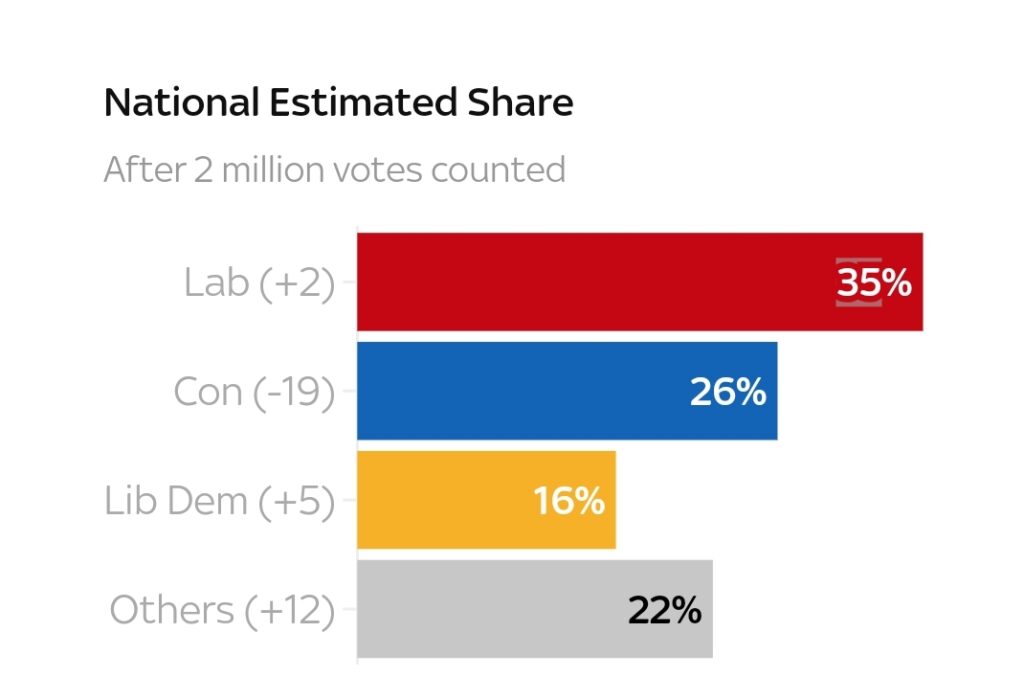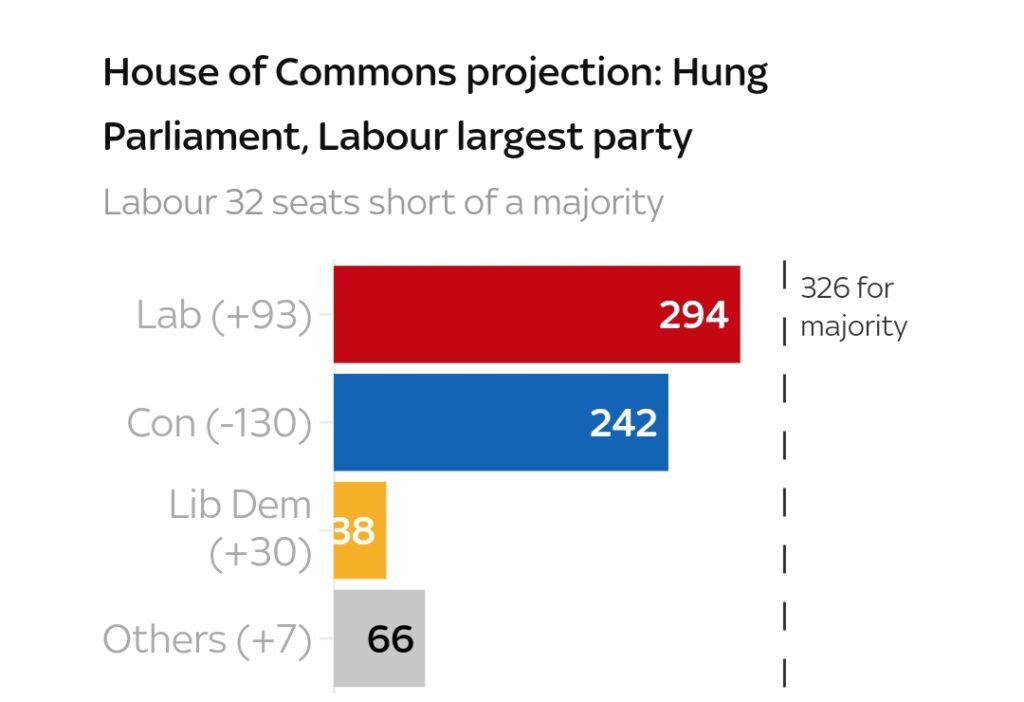Using the latest figures from the local elections, it can be projected that Labour is on course to be the largest party in parliament – but falls short of a Commons majority by 32 seats.

UAE News has considered results from two million council wards and projected these voting figures into a nationwide estimate. They suggest, at the next general election, Labour could be on course to become the largest party but still short of a commons majority.
Labour‘s vote rises from 33% in 2019 to 35% on the current estimate, after more than half the wards have now declared.
The Liberal Democratic Party’s approval rating was 16%, an increase of 5 points compared to the 2019 election. This follows the well-known pattern of parties performing better in local elections than in parliamentary elections.
Other political parties, including the Greens, Reform Party and Independents, are expected to reach 22%.
The figures also assume that voting for nationalist parties in Scotland and Wales, where local elections were not held, remains unchanged compared to the previous election. The same conditions apply to 18 seats in Northern Ireland.

Assuming that these vote share changes occur evenly across all redistricted constituencies at the next general election, Labor would gain 294 seats, overtaking the Conservatives, compared to 32. Due to this difference, they will miss out on the absolute majority.
The Conservatives will be reduced from 372 seats to just 242 in the new constituency, a loss of 130 seats. Liberal Democratic Party increased from 8 seats to 38 seats.
As is often the case with such projections, local vote counts indicate that one party is “winning” a constituency, while across-the-board fluctuations indicate that this is not the case. There are individual constituencies that are suggested.

His two examples of such are Aldershot and Plymouth Moorview, but when you add up the local votes for the wards within these constituencies, they both fall into Labour.
However, using the same procedure would reduce Labor’s number of seats if local votes in constituencies such as Blackburn and Oldham West were to ‘win’ over independents when the votes were actually counted.
Labor easily retains these constituencies, allowing uniform turnover.
The large number of votes for other parties highlights the growing tendency of some voters in local elections to support a large number of small parties.
This trend will be reinforced this year by a move away from Labor and towards independents in certain parts of the country.

